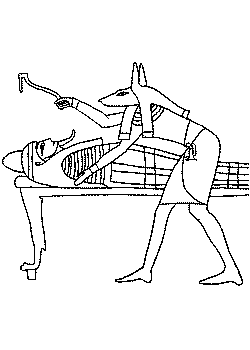
A ritual intended to open the mouth of the deceased and his statues and thus return to him the use of his faculties. The ritual was designed not only to enable the mouth to speak and eat again, but also the eyes, ears and nose to again carry out their functions. The Opening of the Mouth ritual was originally meant for statues, but later it was also carried out on mummies. The ritual could also be performed for shabtis, and even for entire temples. The ritual is extremely old. As a result of numerous finds dating from the Nagada I period of an object used in the ritual, the so-called 'peseshkef' the end of which is shaped like a fish's tail, it has been concluded that a similar ritual was enacted as early as the Predynastic period. In the Pyramid Texts from the Old Kingdom is a ritual that is virtually identical to the one known from later times. It is assumed that it was regularly carried out in the Old Kingdom for statues of the king in the valley temple of his pyramid complex. Our richest source of information about the ritual comes from the representations of it in tombs and on papyri from the New Kingdom and later. There is a good example in the tomb of the vizier Rekhmire in Thebes, illustrating all 75 of the different acts making up the ritual. A large number of these acts consisted of purifications and censing, and there were also libations and the sacrificing of animals. Touching various parts of the body also played an important role. The ritual, at least in theory, was carried out by the eldest son of the deceased. It could be performed in the sculptor's workshop, the embalming workshop or in or near the tomb.